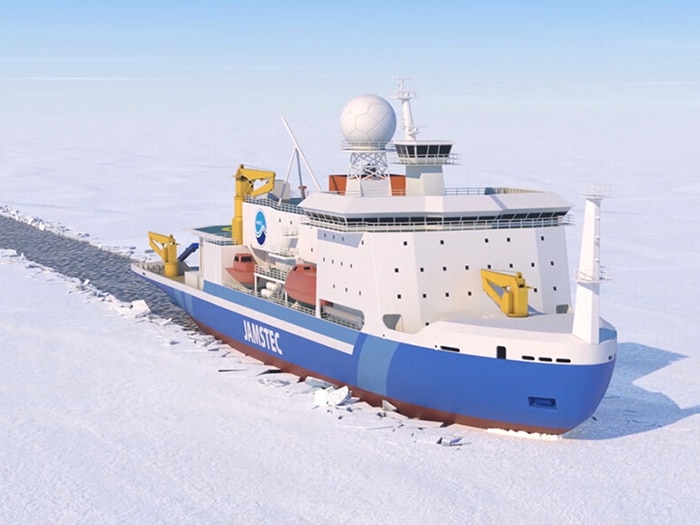
VIDEO: Japanese icebreaking research vessel project moves ahead
Written by Nick Blenkey
MOL is to deploy an outfitting crew to the shipyard building Japan's first icebreaking research vessel
JAMSTEC (Japan Agency for Marine-Earth Science and Technology) has taken another step forward on the build of Japan’s first research vessel with icebreaking capabilities. The icebreaking research ship is on order at Japan Marine United’s Isogo shipyard in Yokohama where, as of last month, the design of the hull structure was nearing completion. Now the vessel operator and construction supervisor, Mitsui O.S.K. Lines, Ltd. (MOL), and its MOL Ship Management Co., Ltd. and MOL Marine & Engineering Co., Ltd. subsidiaries have been awarded contracts that will see them deploy an outfitting crew to the shipyard
The LNG dual-fueled Polar Class 4 ship will have a total length of 128 meters, a width of 23 meters, an international gross tonnage of about 13,000 tons, and a crew of 99 people. It will be to break sea ice with a thickness of 1.2 meters at a speed of 3 knots, and will be equipped with drones, unmanned probes, and Doppler radars used for weather observations.
JAMSTEC has been observing the Arctic Ocean almost every year since 1998 with the oceanographic research vessel Mirai, but due to that vessel’s lack of icebreaking capability, it has not been able to enter the sea ice area and has been limited to reaching up to 79° North latitude.
JAMSTEC says that the environment in the Arctic Ocean is changing faster than anywhere else in the world and this is affecting Japan’s weather, including by producing heavy snowfalls. The new icebreaking research vessel will help the agency improve the accuracy of predictions of what will happen in the future. There are also expectations for a new summer sea route in the Arctic Ocean and the research ship’s work will focus not only on sea ice areas, but also on navigation and observation performance in sea ice-free areas.
The MOL outfitting crew will oversee the outfitting of the vessel, confirm that quality is consistent with building specifications and identify any deficiencies. They will serve as the vessel’s crew members on completion, expected to be by around November 2026;
MOL says that, as the operator of the ship, it will utilize the know-how and human resources it has cultivated over the years in navigation of the Northern Sea Route and in the handling of LNG as a fuel.
More on the vessel HERE and in the video.




